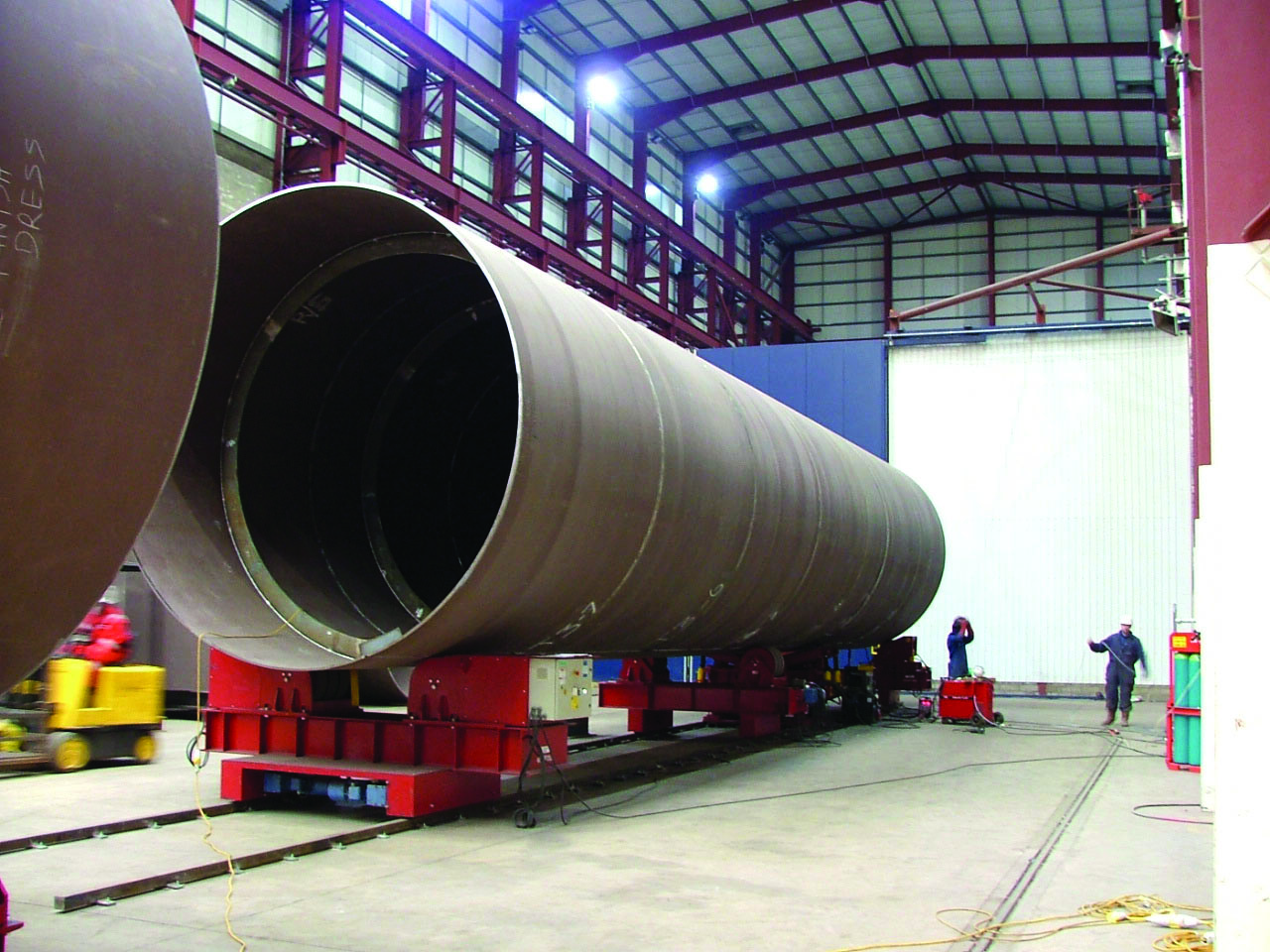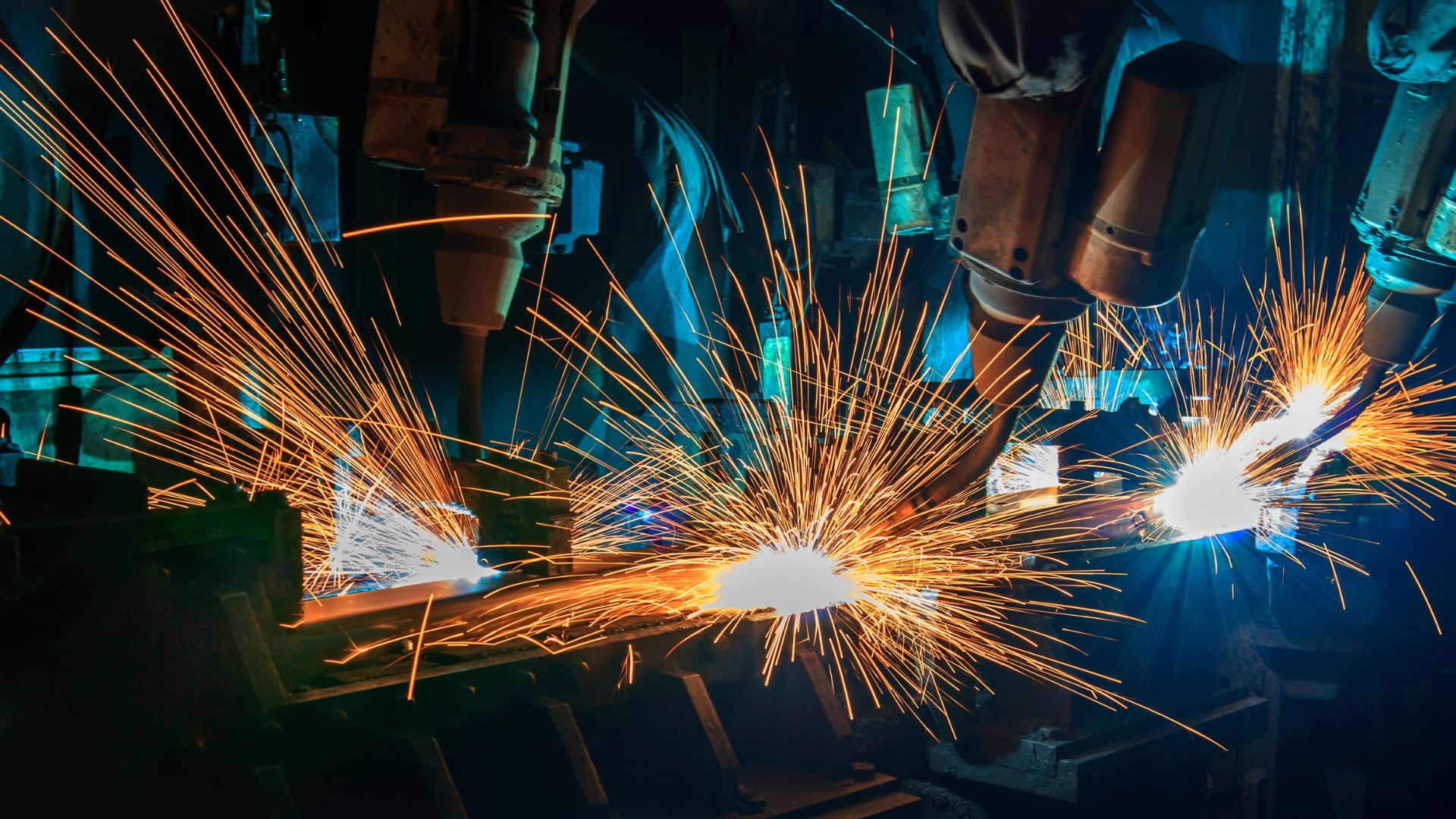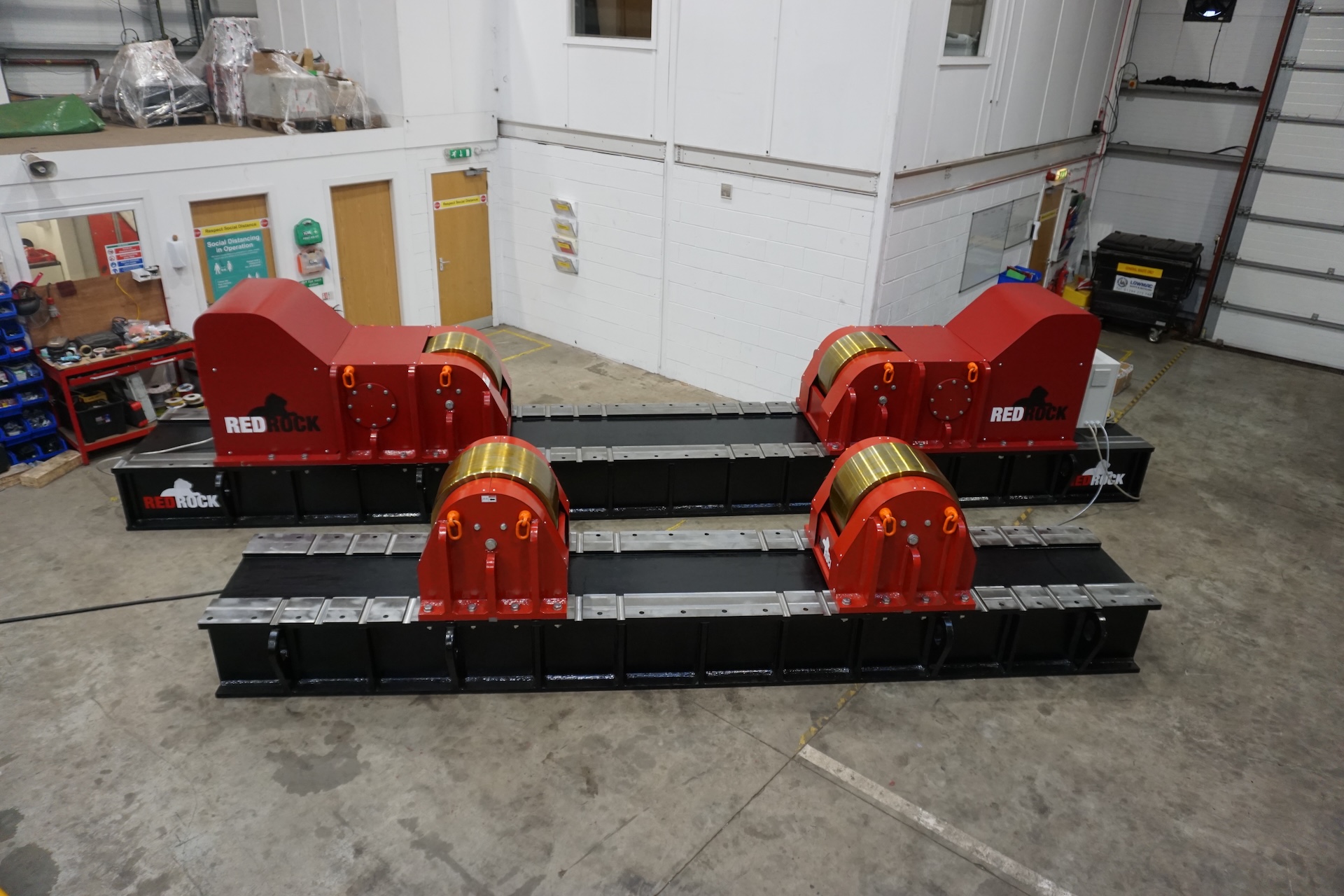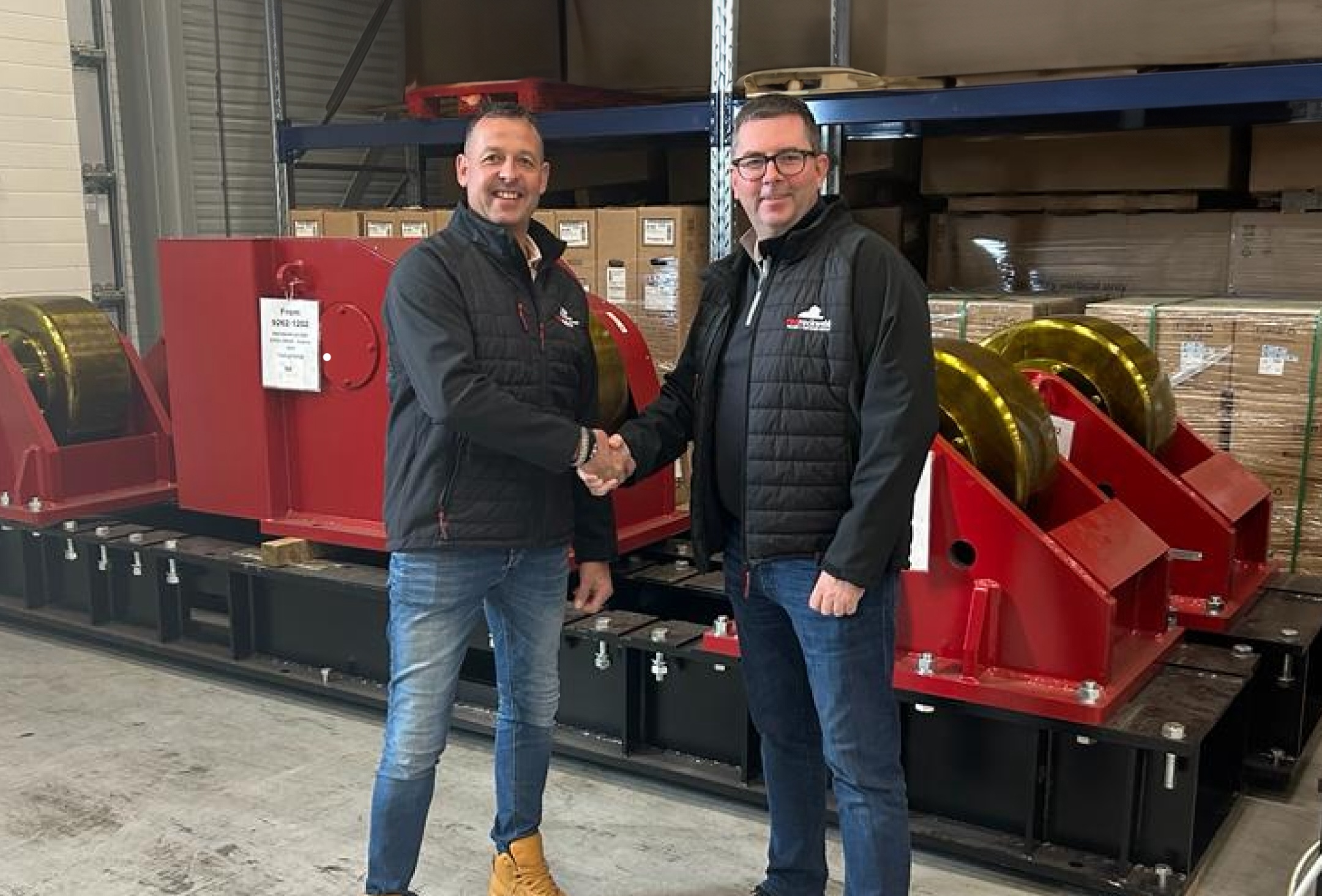Automated Rolling of Cylindrical Workpieces: If it’s Round, You Can Roll It!
Conventional welding rotators are a common piece of mechanical handling equipment in fabrication shops, as well as any factory floor with large cylindrical workpieces. The main reason they’re beneficial is that they reduce manual handling and achieve accurate turning often at pre-set speeds letting welders perform circumferential welds at the most suitable angle.
Larger setups can see tank turning rolls combined with different systems to automate not just the turning of cylindrical vessels, but also to include weld automation rigs such as a weld positioner to automate circumferential welds on cylindrical vessels. Rotators turn the vessels and a weld head/welding torch can be suspended above the workpiece providing a stationery weld head position with adjustable height positioning. However, that’s only one job weld rotators can perform…
Pipe or Tank Turning Rolls Can Turn Anything That’s Round
Welding rotators can refer to pipe or tank turning rolls equipped with additional welding equipment. A pipe turning roll automates the rotation of standard pipe diameters, and oversized pipes require tank turning rolls.
The term welding rotators is likely the better understood term in weld shops because the equipment can be customised with any number of additional equipment to complete a rig. In other industries, turning rolls work just as effectively at reducing manual handling time and increasing productivity rates.
Achieving Optimal Weld Positions with Large Diameter Pipes
Tank turning rolls are used for large diameter pipes such as pressure vessels and rocket casings among other large cylindrical vessels requiring precision welds such as those in the aerospace, defense and energy sectors. In addition to getting quality welds right the first time, reducing rework, tank turning rolls can be further equipped with various weld automation equipment reducing operator fatigue and increasing quality and production output.
Turning Rolls in Various Stages of Production
Pressure vessels and other oversized cylindrical workpieces need welding, sand blasting and painting done prior to shipping to the destination site. Circumferential welds can be done using a weld rotator and with various speed settings available, non-destructive testing can be carried out to verify all weldments are sealed before using the turning roll to pre-treat pipes with sand blasting prior to painting.
Painting of large cylindrical vessels can be mainly automated on-site with tank turning rolls, avoiding the need for manual painting after all the components are assembled at the destination site. Essentially, tank turning rolls can be used for weld automation and for fitting and assembly of large cylindrical workpieces.
Tank Turning Rolls for Wind Tower Components
Wind towers are constructed with thick steel cans requiring advanced welding processes to penetrate thick steel. Tank turning rolls equipped with an overhead weld torch can be used to automate circumferential welding as the machinery will turn the pipes under a stationery weld head. In addition to automated welding of wind tower components, specialised tank turning rolls can be used for sand blasting large diameter pipes in preparation for painting.
Supporting Longer Work Pieces that Don’t Fit on the Turning Roll
On longer work pieces, it may be that the length of the object is too large to fit on the one turning roll. In these cases, larger equipment is an option, but the simplest way to support overhangs of tubular and other round objects is to use pipe stand supports. These are used in addition to rotation equipment to support overhangs.
Weld rotators is just a term used to describe turning rolls when they are used to automate material handling of cylindrical objects in the welding sector. Pipe turning rolls is the term used for standard sized manipulators. Tank turning rolls are heavy-duty manipulators used to rotate large diameter pipes. They aren’t solely for weld automation though. Turning rolls without any additional automation equipment are used in a variety of industries, some of which don’t have any need for welding processes, for example, cleaning, painting and/or inspection of workpieces.
When manufacturers need to mechanise the movement of large round objects, turning rolls are the equipment to automate handling, thus increasing production. The size of the turning roll used is determined by the size of materials needing handled. Pipe turning rolls refer to the equipment used to rotate standard sizes of pipe, whereas tank turning rolls are used to rotate oversized cylindrical workpieces. The sizes already available cover the majority of industries, however for certain processes, customisations may need made to equipment to accommodate any size and weight of cylindrical objects. The simplest addition to turning rolls is a pipe stand support as those can be used to support overhangs of round objects that’s too long to fit on the turning roll in use.







